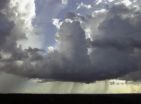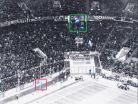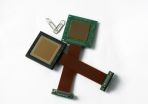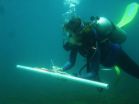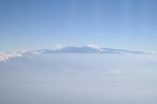Citizen scientist
Helping scientists help themselves
2010-09-20
(Press-News.org) We are all scientists now, thanks to SETI@home, Galaxy Zoo, The Great Sunflower Project, Folding@home and counltess other projects that allow individuals to take part in scientific research directly or indirectly. In the case of SETI@home and Folding@home one shares one's computer CPU with the researchers, whereas Galaxy Zoo is more about active involvement with the classification of stellar objects in images of the night sky, for instance.
Now, writing in the International Journal of Organisational Design and Engineering, US researchers have mapped out an approach to virtual organizations that might allow scientific advances made in part by citizen scientists to move forward much more quickly.
"Citizen science is a form of organisation design for collaborative scientific research involving scientists and volunteers, for which internet-based modes of participation enable massive virtual collaboration by thousands of members of the public," explains Andrea Wiggins of Syracuse University, New York, who works in the research group of Kevin Crowston. Earlier work on virtual organizations, the team points out has focused on distributed collaboration among scientists and related professionals. However, the rapidly increasing power of personal computers, the connectivity afforded by the internet and social media, as well as an apparent growing interest in scientific discovery means there is much greater access to scientific discovery for non-scientists than ever before.
The team explains that, "Citizen science projects conducted via web technologies can yield massive virtual collaborations based on voluntary contributions by diverse participants. The increasing scale of citizen science projects, some of which involve hundreds of thousands of members of the public in distributed data collection and analysis, suggests a need for additional research. In particular, designing organisations to support this form of scientific knowledge production requires understanding the effects of organisation and task design on the scientific outcomes of citizen science projects."
The team has used an existing theoretical framework borrowed from the social sciences and normally used for small organizational groups to build a new model of how best to organize the volunteers in a distributed, collaborative scientific experiment. The approach has allowed them to look at how volunteers might register, interact and reveal the results due to their efforts.
"The theoretical model highlights some key aspects of organizing and running citizen science projects," explains Wiggins. "This could assist people creating new projects or designing supporting technologies for them in better understanding the complex relationships between the diverse elements that go into generating good outcomes, both in terms of volunteer experiences and scientific results." She points out that, "Many project organizers are initially surprised by the extent and variety of the decisions that go into setting up a large-scale project to engage the public in science, so we hope this model provides a starting point to help promote intentional design and decision-making to better support learning and discovery."
INFORMATION:
"Developing a conceptual model of virtual organisations for citizen science " in Int. J. Organisational Design and Engineering, 2010, 1, 148-162
END
ELSE PRESS RELEASES FROM THIS DATE:
2010-09-20
They challenge the mountain ranges of the Alps, the Andes and the Himalayas in size yet surprisingly little is known about seamounts, the vast mountains hidden under the world's oceans. Now in a special issue of Marine Ecology scientists uncover the mystery of life on these submerged mountain ranges and reveal why these under studied ecosystems are under threat.
The bathymetry of our oceans is now resolved at a scale and detail unimaginable by early pioneers and recent estimates suggest that, globally, there may be up to 100,000 seamounts, yet despite best efforts less ...
2010-09-20
Treating hospital patients with thigh-length surgical stockings, rather than knee-high socks, can reduce life threatening blood clots, a new study suggests.
Researchers found that knee-high stockings, which are similar to flight socks, do little in stroke patients to prevent deep vein thrombosis (DVT), a life threatening form of blood clot that can travel up into the heart and lungs, .
The CLOTS (Clots in Legs Or sTockings after Stroke) study from the University of Edinburgh highlights that the clot rate in stroke patients was higher among those fitted with the shorter ...
2010-09-20
The forest in the Amazon Basin produces its own rain. During the wet season, aerosol particles, which serve to condensate clouds and precipitation here, mainly consist of organic material. These aerosols are released by the rainforest itself. This has been demonstrated by scientists from the Max Planck Institute for Chemistry in Mainz, who are now able to draw conclusions about the mechanisms of this ecosystem: the high content of organic material indicates that the Amazon Basin acts as a largely self-contained biogeochemical reactor during the rainy season. The results ...
2010-09-20
»Goal, goal, goal!« fans in the stadium are absolutely ecstatic, the uproar is enormous. So it's hardly surprising that the security personnel fail to spot a brawl going on between a few spectators. Separating jubilant fans from scuffling hooligans is virtually impossible in such a situation. Special surveillance cameras that immediately spot anything untoward and identify anything out of the ordinary could provide a solution. Researchers from the Fraunhofer Institute for Applied Information Technology FIT in Sankt Augustin have now developed such a device as part of the ...
2010-09-20
More and more car manufacturers are equipping their vehicles with image sensors – e.g. to register the presence of pedestrians or vehicles in the blind spot or to detect obstacles when parking. The sensors must be able to function in extremely high temperatures and in blazing sunlight. If they are installed behind the rear view mirror or on the instrument panel, for example, they can get very hot. The Fraunhofer Institute for Microelectronic Circuits and Systems IMS in Duisburg has developed a CMOS (complementary metal oxide semiconductor) image sensor for an industrial ...
2010-09-20
Healthy reefs with more corals and fish generate predictably greater levels of noise, according to researchers working in Panama. This has important implications for understanding the behaviour of young fish, and provides an exciting new approach for monitoring environmental health by listening to reefs.
Contrary to Jacques Cousteau's 'Silent World', coral reefs are surprisingly noisy places, with fish and invertebrates producing clicks and grunts which combine to produce cacophonies of noise. Each reef is subtly different depending on the size and composition of the ...
2010-09-20
The rocks of Colombia's Sierra Nevada de Santa Marta—the highest coastal mountain on Earth—tell a fascinating tale: The mountain collides and then separates from former super-continents. Volcanoes are born and die. The mountain travels from Peru to northern Colombia and finally rotates in a clockwise direction to open up an entirely new geological basin. Smithsonian scientists were part of a four-year project to study Santa Marta's geological evolution. Their findings are published in the October 2010 special issue of the Journal of South American Earth Sciences.
The study ...
2010-09-20
Is the US health system comprehensively meeting the needs of returning veterans? With the recent attention to mental illness in returning soldiers, and post-traumatic stress disorder (PTSD) in particular, little research has focused on the medical care needs of those returning from Operation Enduring Freedom/Operation Iraqi Freedom, according to Dr. Susan Frayne, from the VA Palo Alto Health Care System and Stanford University, and colleagues.
Their research highlights that veterans suffering from PTSD also suffer more medical illnesses than do those with no mental health ...
2010-09-20
TORONTO, Ont., Sept. 20, 2010 – A drug commonly prescribed for people with high cholesterol may also be effective in treating prostate cancer, according to new research by Dr. Xiao-Yan Wen at St. Michael's Hospital.
Rosuvastatin—a statin drug sold as Crestor—suppressed the growth of transplanted human prostate cancer cells in mice.
"Our data provided solid pre-clinical evidence and a strong rationale for clinical trials of statins in the treatment of prostate cancer," said Wen, whose research appears in the September issue of European Urology, the journal of the European ...
2010-09-20
The United States could achieve significant health care savings if it achieved widespread adoption of electronic health records (EHRs), but insufficient privacy protections are hindering public acceptance of the EHR concept, according to a new paper from researchers from North Carolina State University. The paper outlines steps that could be taken to boost privacy and promote the use of EHRs.
"Electronic health records could reduce costs in the U.S. by an estimated $80 to 100 billion each year," says Dr. David Baumer, head of the business management department at NC State ...
LAST 30 PRESS RELEASES:
[Press-News.org] Citizen scientist
Helping scientists help themselves

